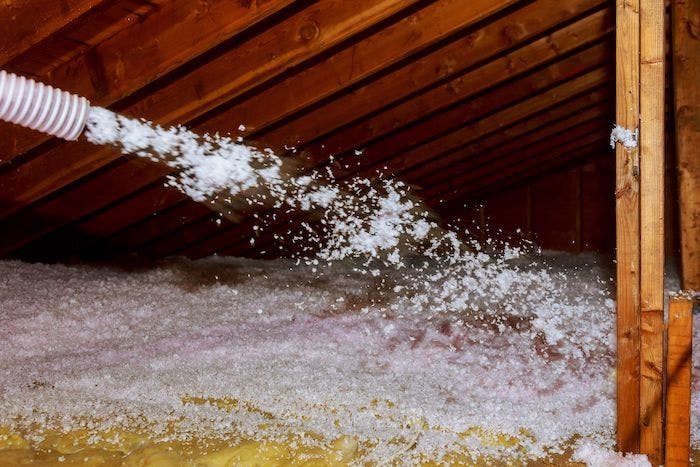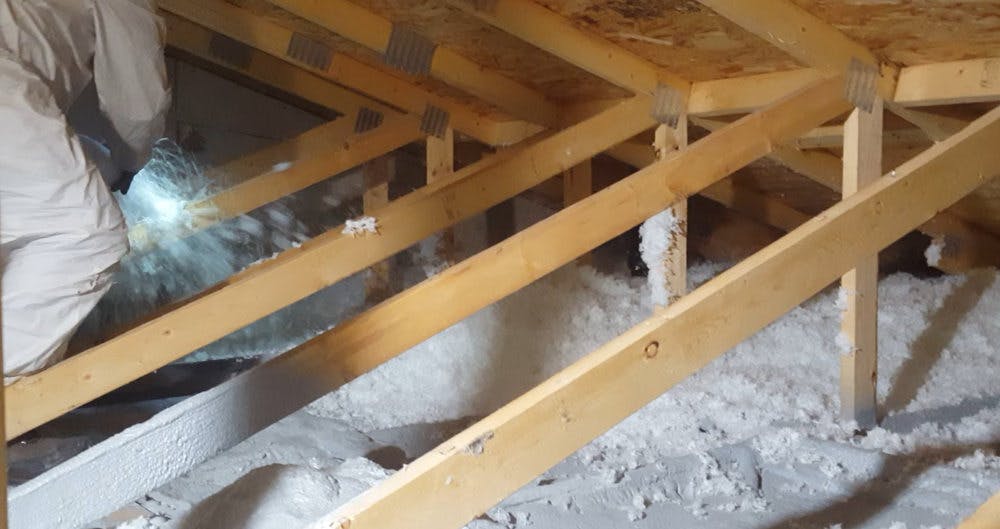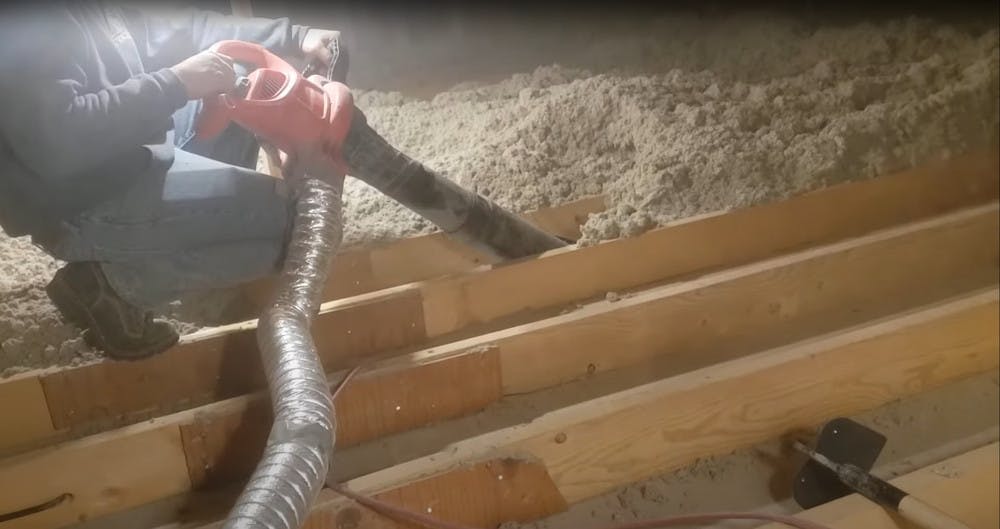Blow-In Attic Insulation in Seattle, WA
Blow-In Insulation
Blow-in Insulation is also known as loose-fill insulation. It is typically blown or poured in the area that needs to be insulated. Because it is made of recycled materials, it typically lasts 20-30 years. Blow-in insulation can help seal gaps, cracks, and reduce air leakages. It is also fairly cost-effective making it a popular choice among homeowners in Seattle, WA. In addition, it’s also fairly easy to install. However, when it comes to attic insulations, you want to make sure you are doing things properly - otherwise you will waste a ton of money. Get in contact with us to get blow-in insulation installed professionally.
Which Blow-in insulation is best fit for attics?
There are a few options for blow-in insulation for the attic. Each type has its own unique characteristics and benefits. Your choice will depend on the budget, desired performance, and any special needs. Our experts will help you pick the most suitable blow-in insulation option for your attic. We aim for optimal energy efficiency and comfort. Here are a few popular choices:
- Fiberglass: Fiberglass blow-in insulation is a popular choice for its thermal performance and affordability. It is installed by blowing loose fibers into the attic space. These fibers will fill gaps and cavities. Fiberglass is not flammable and resistant to moisture, mold, and pests. This makes it a durable and long-lasting insulation option.
- Cellulose: Cellulose blow-in insulation is made with recycled paper treated with fire-retardant chemicals. It is an eco-friendly friendly choice that offers great thermal performance. Cellulose insulation forms a dense layer that fills open gaps. It can also act as a sound barrier. This material is good for irregular spaces that may be difficult to insulate.
- Mineral Wool: Mineral wool is another fire-resistant material. It also offers soundproofing capabilities to reduce outside noise. It is very flexible and can be blown into spaces that are hard to reach.
Let us help you decide if Blow-In insulation makes sense for you
Is blow-in insulation the right choice for my attic?
How old is your home? What is the current condition? Do you want to reduce your energy bills or protect your home from mold? These are some of the many questions you need to ask. Sometimes blow-in insulation makes sense, sometimes it does not. Noone will be able to give you a correct answer without understanding your situation. Get in contact with us and we will guide you through the decision process.
How often will I need to replace blow-in insulation in the attic?
One common question that arises is how often blow-in insulation needs to be replaced. This will depend on the type of insulation material used and the quality of installation. When installed and maintained correctly, blow-in insulation can last for several decades.
New building codes or insulation technology may warrant an upgrade in the material. They may be required to improve energy efficiency over time. Our experts will assess the condition of your blow-in insulation and provide recommendations. We will let you know when a replacement or new insulation may be necessary.
Keeping a close eye on your attic and addressing any issues is important. Following these steps can ensure optimal performance and energy savings for many years.
Benefits of using blow-in insulation for the attic
Blow-in is a great option for insulating homes in Seattle. Here are some reasons we may suggest opting for this selection:
- Fills gaps efficiently: Blow-in insulation is excellent at filling and sealing gaps, cracks, and hard-to-reach areas. It creates a continuous layer of insulation that helps minimize air leakage.
- Can be layered for added protection: One of the great things about blow-in insulation is the layers. This means that more layers can be added over time. This contributes to insulation effectiveness and provides better thermal performance.
- Flows down and around wood studs: The loose-fill nature of blow-in insulation allows it to fill up around wood studs. This creates a seamless blanket of insulation. It also helps eliminate thermal bridging and ensures consistent insulation coverage.
- Affordability: Blow-in insulation is a very affordable option. Many homeowners in Seattle opt for Blow-in because of the low costs. It has efficient coverage and can heavily reduce energy costs.
- Versatility: Blow-in insulation can be used in various attic types, including irregularly shaped or hard-to-reach spaces. It can be applied to both finished and unfinished attics, providing versatile insulation solutions for different home configurations.
- Easy installation: Installing blow-in insulation is a straightforward process. Trained professionals use specialized equipment to blow the insulation material into the desired areas, ensuring efficient coverage and a uniform layer of insulation.
Disadvantages of using blow-in insulation
Using Blow-in insulation may not always be the best solution. Here are some downsides to consider:
- Causes a mess: Installing blow-in insulation can be a messy process. Loose-fill material can create dust or particles during installation. A professional crew will take precautions to keep the work environment clean.
- Ceiling sag: Over time, the weight of blow-in insulation can cause the ceiling below the attic to sag. This is why it is crucial to check the structural integrity of your home first. Our crew will always take precautions to this.
- Prone to mold: Blow-in insulation is susceptible to mold growth in humid environments. Seattle experiences a lot of rain which increases the potential of leaks in the attic. If moisture spreads, then you may have to deal with moldy insulation.
- Compress over time: Blow-in insulation may experience compression over the years. As it compresses, the effectiveness of the insulation will wear off. Regular inspections can help identify any signs of compression and address them early.
- Dust and debris: Blow-in insulation is susceptible to collecting dust and debris over time. Regular cleaning or vacuuming is needed to reduce the accumulation of dust and debris.


